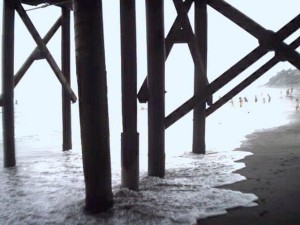This one’s not going to be very new, I fear. It seems to have been the core outcome for most of the folks coming out of the Dinnervention, and of course is also a trope that has run its course through the blogosphere for a while. And yet…
If the core problem facing the arts today really is one of relevance, of public value, of engagement, then the core solution must be one that embraces what America writ large finds relevant, what the public values, and what a new and expansive definition of prospective arts consumers find engaging. This, to me, seems both obvious and nearly insurmountable in its scope. Obvious for obvious reasons, I hope, and nearly insurmountable because of the incredible inertia that exists, for reasons both good and bad, around our media, our systems, our institutions, our language, our structures, our criteria for success.
At the dinner, Laura Zabel, Devon Smith, Marc Bamuthi Joseph and others started by framing out the dichotomy of art and the institution. Art is not dwindling. Art is not in trouble. Art has always and will always exist–it is a pervasive force that manifests in every culture; it is the way we tell stories, tell history, teach lessons, show love, grieve, celebrate, honor. The decline in “arts” participation in the past thirty years, since the advent of the first Survey on Public Participation in the Arts by the NEA, is in fact the decline in participation at the core Eurocentric artistic institutions. It is a decline that maps exactly against the rise of new populations, the fall of arts education programs throughout the country, the adoption of art-as-code-for-elitism by the right wing. But it is not a decline in art making or art consumption. It is a decline in consumption of a particular type of art, narrow in form, time- and place-based, constrained by hundreds of years of rules and mores.
It is also, as it happens, a decline in the institutions that have made full- and part-time employment as artists and arts administrators possible. Which leads to schizophrenia in the core question–because “art,” arguably, has never been more relevant, more valued, more engaging, even as “arts institutions,” in particular those that hold strongly to the trappings of traditional arts, dwindle in importance. They are, for most of the parts of our population that are expanding, not the place where art really lives–they place it distantly, on a hill, obscured by walls and price and vocabulary that doesn’t resonate, down a winding road that is narrow and tight, beautiful, perhaps, but why can’t I just do that at home?
Which may, in a way, be all to the good—at least until you get to the finer points of survivability, the underpinning training required to create free pop songs, the core societal resonances that pervade the chords of homemade music, the subjects of personal paintings, the structure of self-told stories. Then the room starts echoing the sounds of silence.
A new movement in the arts must be cognizant of the fact that we are moving inside a space that is infinitely larger and more diverse than we ever will be. At the same time, a new movement must embrace and tout the ways in which the old forms are a required foundation for the new ones. It must understand the grace that allows us to exist in that space, and must let go of any feelings of entitlement or ownership–we do not make the arts exist, they have existed long before us and will exist long after we and our organizations have gone.

